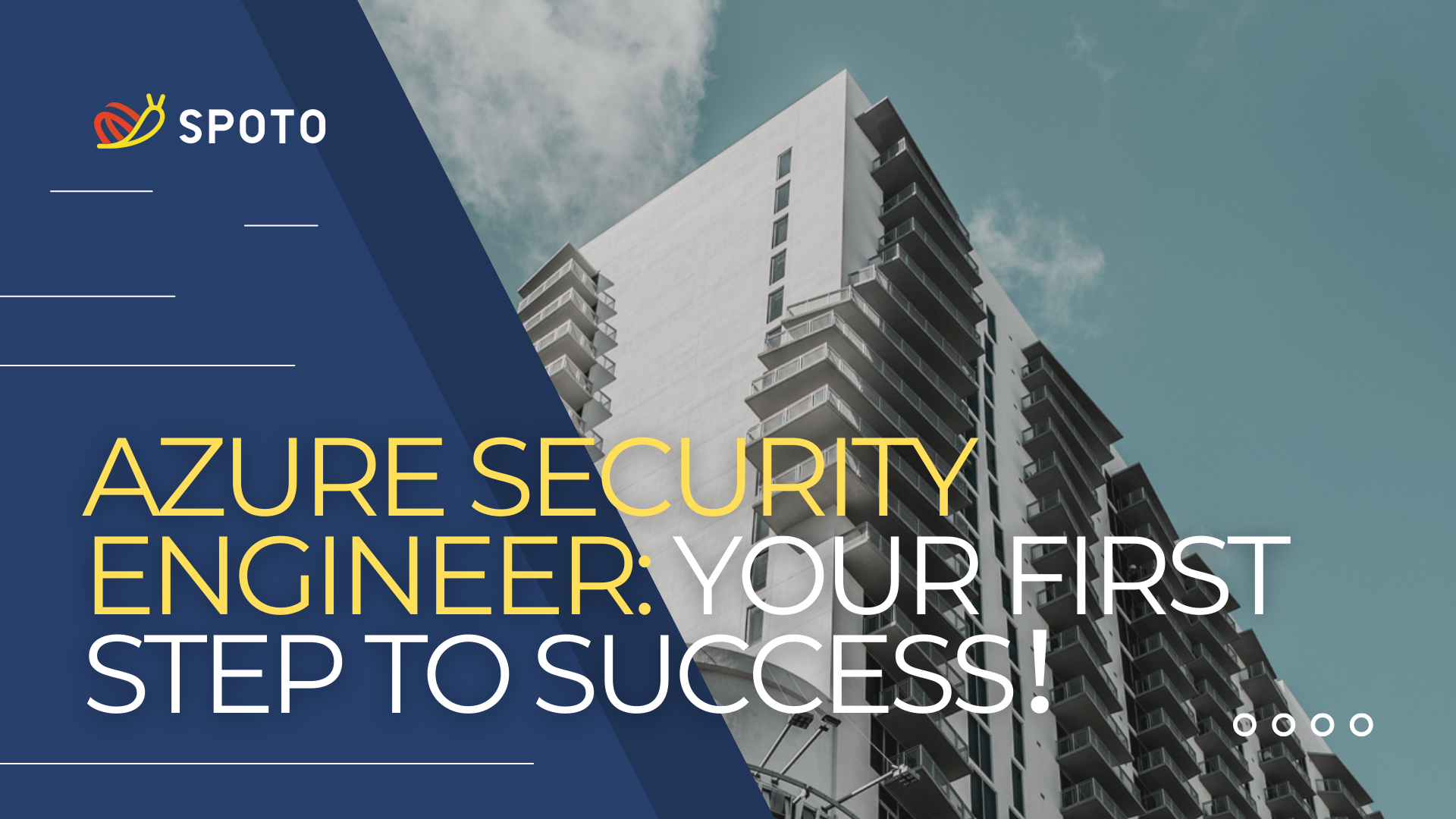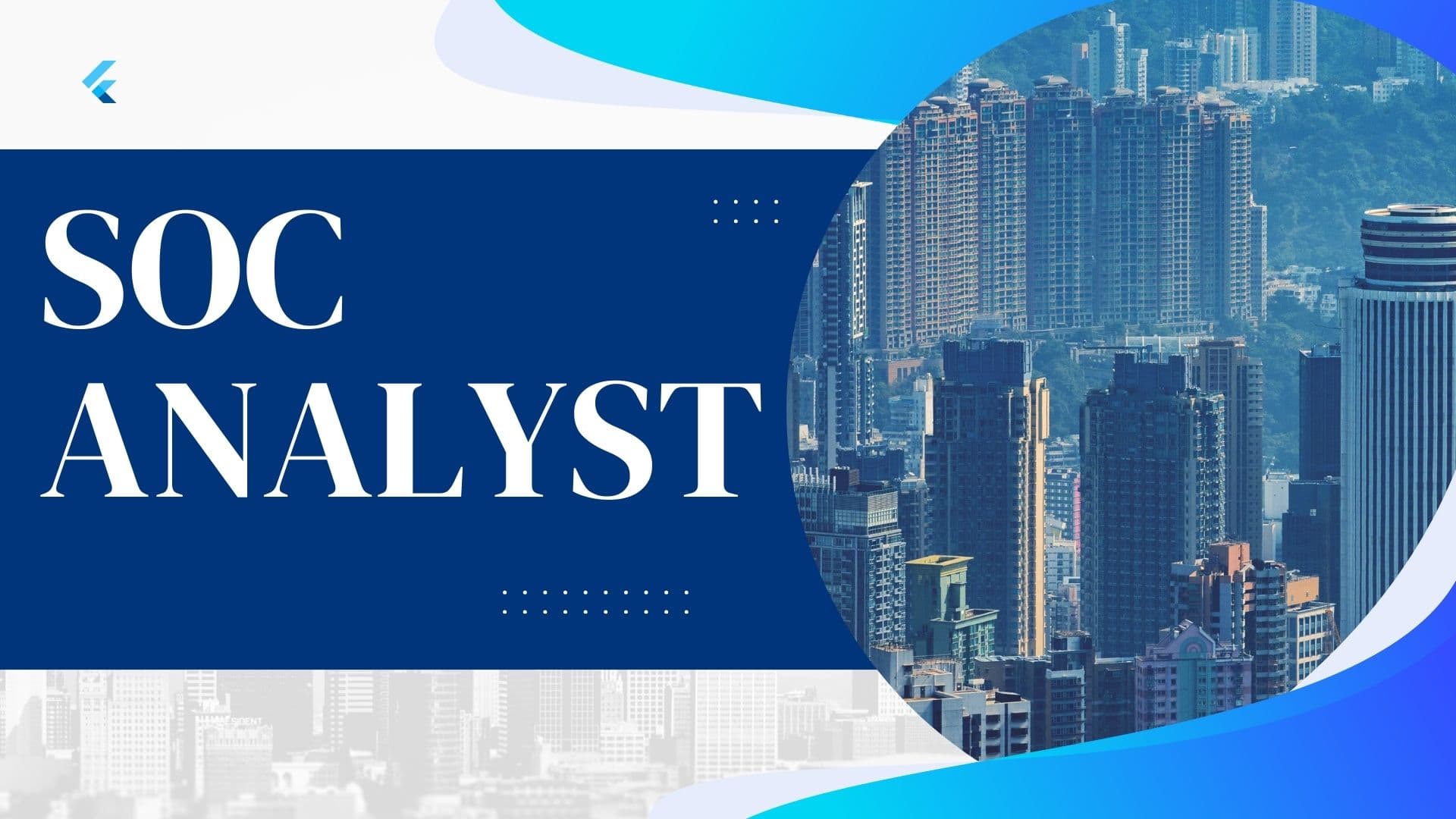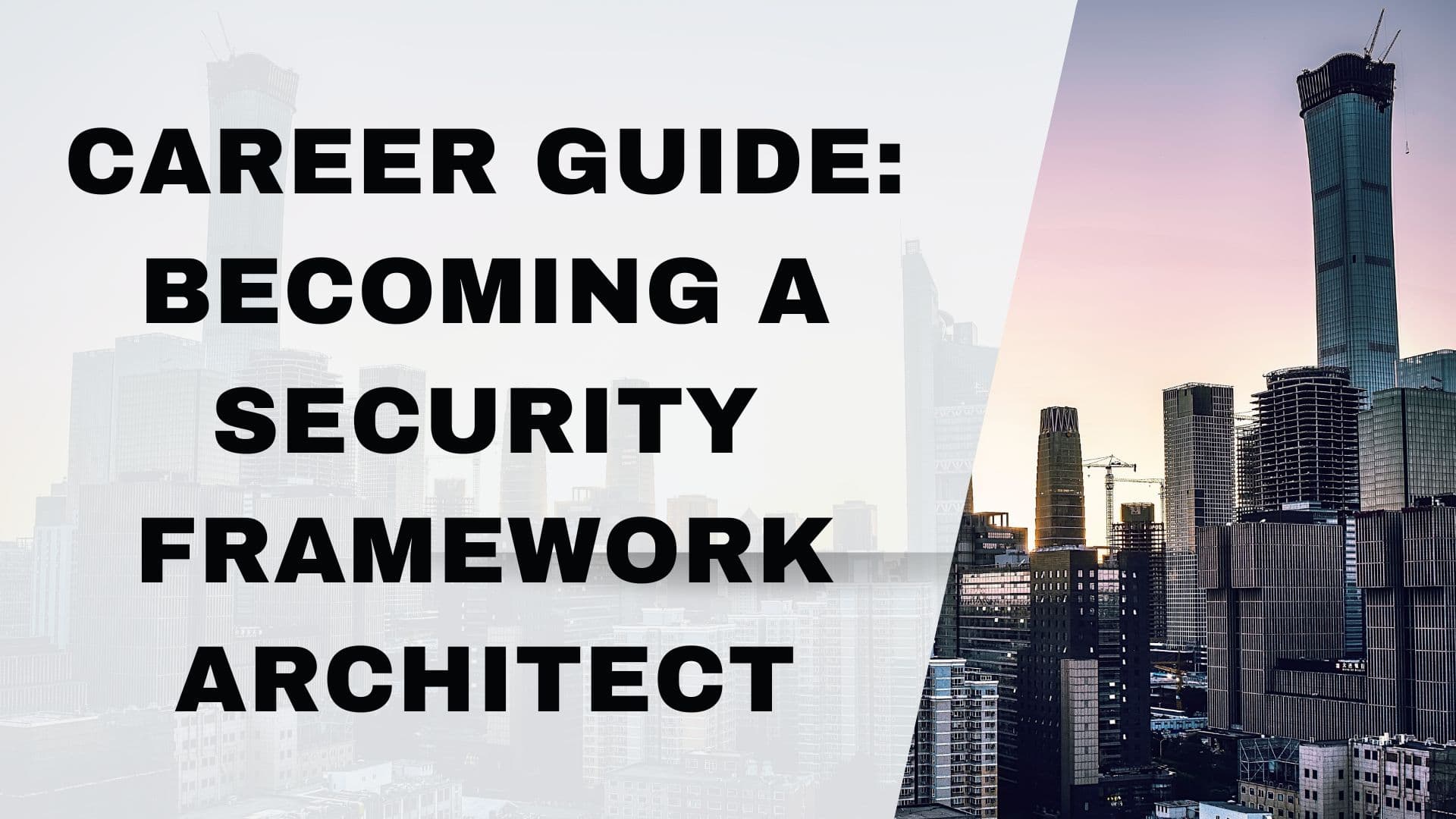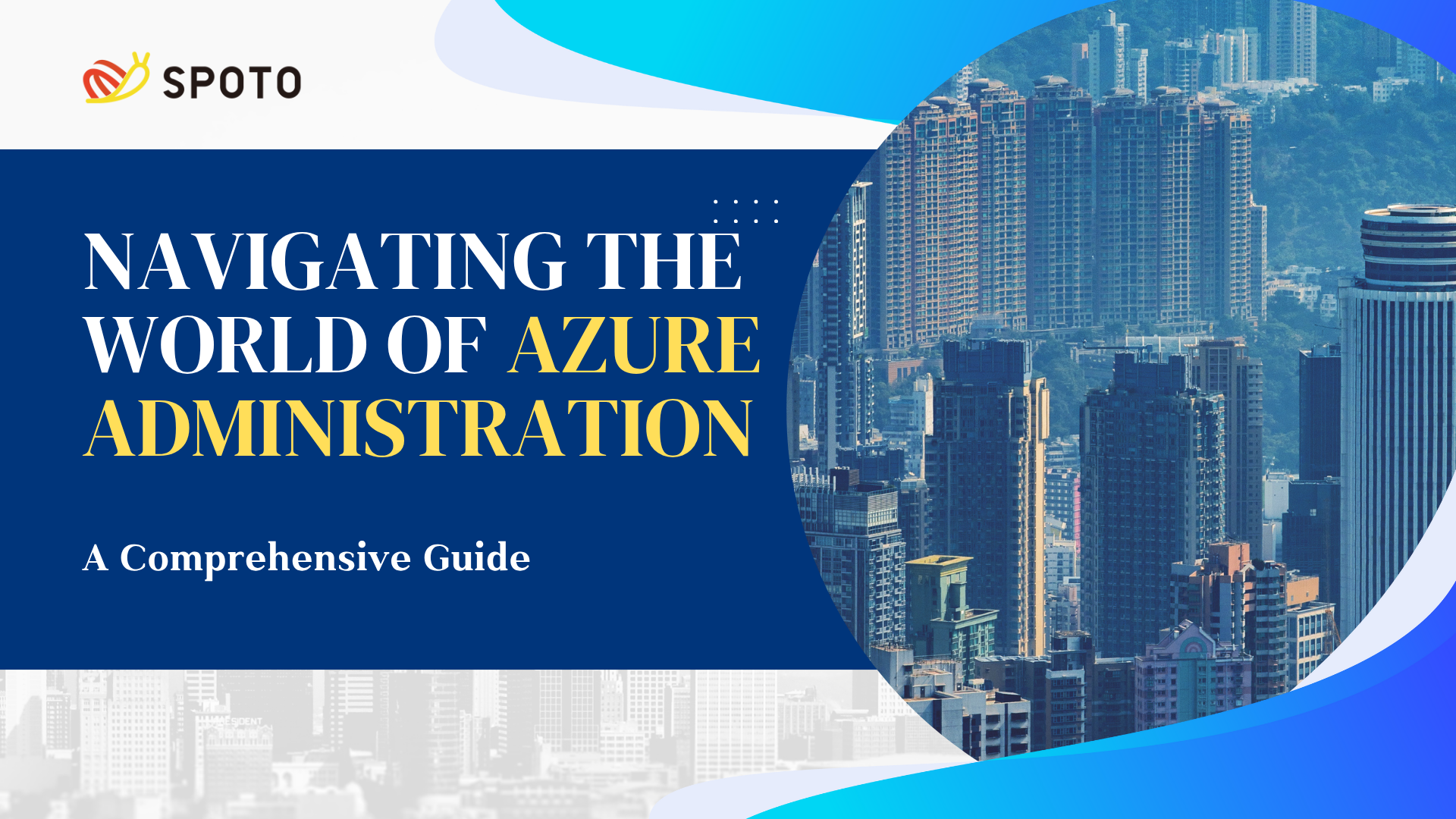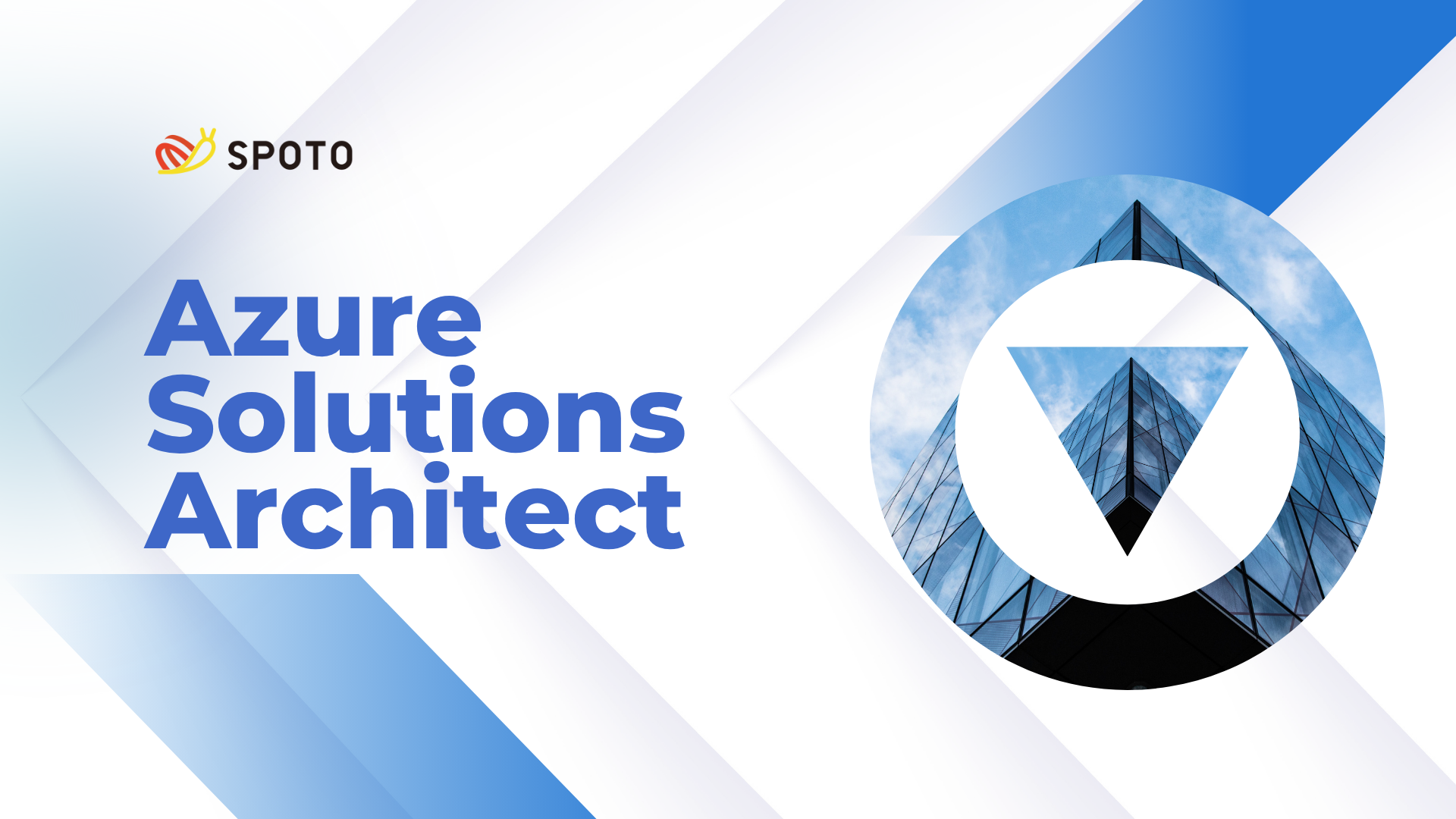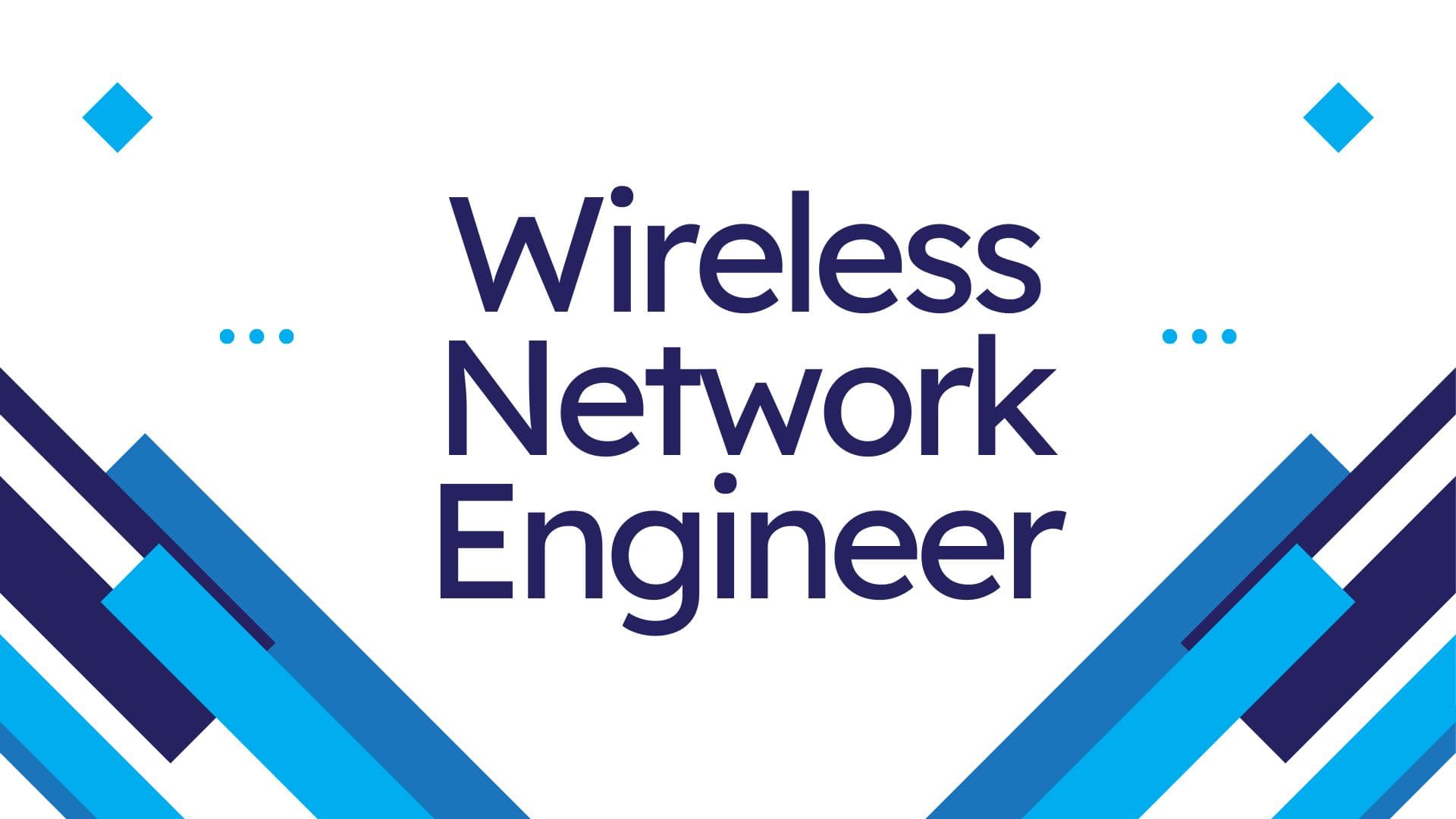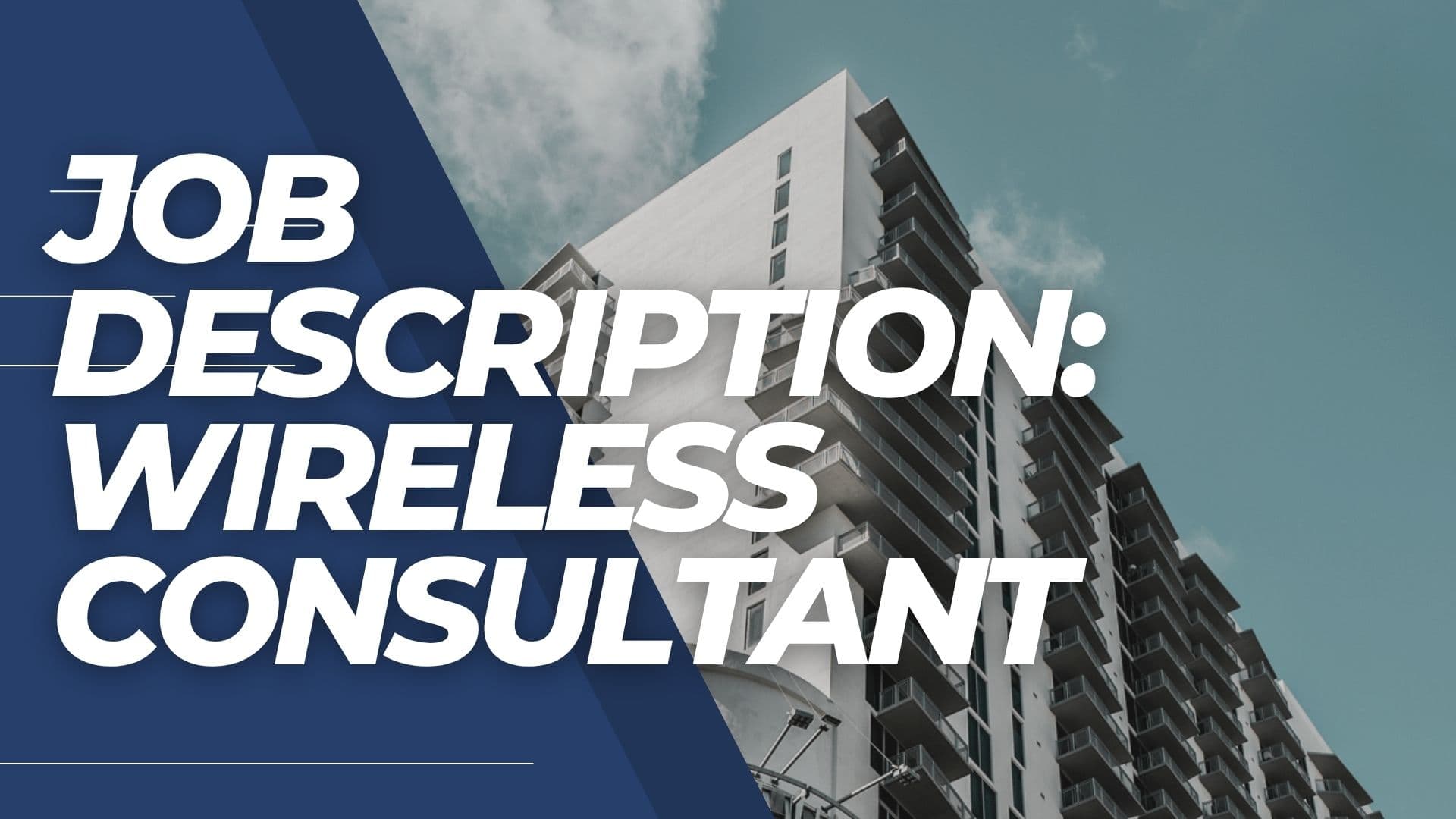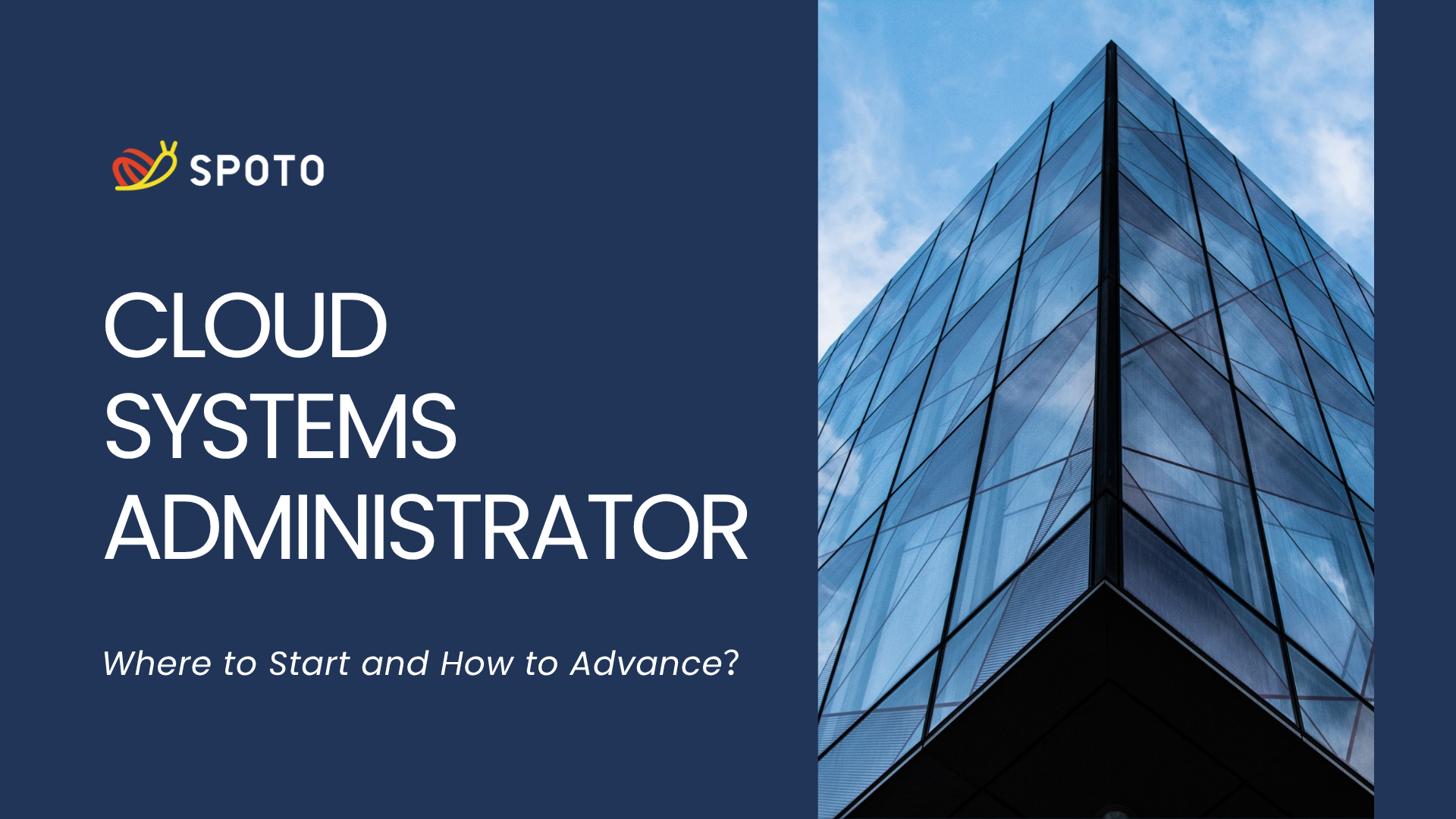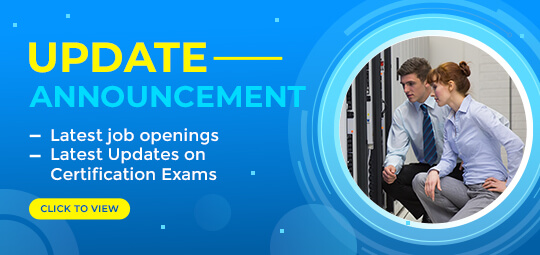TRUSTED BY THE SMARTEST TEAMS IN THE WORLD FOR CERTIFIED CANDIDATES
SPOTO Blogs
Useful learning materials to become certified IT personnel
-
- 1141
- Emma
- 2025-05-15 12:43
-
- 960
- Emma
- 2025-05-15 12:09
-
- 678
- SPOTO
- 2025-05-15 11:45
-
- 947
- SPOTO
- 2025-05-15 11:19
-
- 1082
- Emma
- 2025-05-14 16:47
-
- 1172
- Emma
- 2025-05-14 15:42
-
- 1120
- SPOTO
- 2025-05-14 11:15
-
- 1005
- SPOTO
- 2025-05-14 10:44
-
- 766
- Emma
- 2025-05-13 16:23
TRUSTED BY THE SMARTEST TEAMS IN THE WORLD FOR CERTIFIED CANDIDATES
SPOTO Blogs
Useful learning materials to become certified IT personnel
-
- 1141
- Emma
- 2025-05-15 12:43
Table of Contents1. What is an Azure Security Engineer?2. How to Become an Azure Security Engineer?3. The Details4. Conclusion In today's digital landscape, securing cloud environments is more critical than ever. As organizations migrate their operations to the cloud, the demand for specialized security roles skyrockets. Among these, the Azure Security Engineer stands out as a vital player in protecting sensitive data, infrastructure, and applications within Microsoft's cloud platform. If you're passionate about cybersecurity and eager to carve out a career in cloud security, this guide will introduce you to the exciting world of Azure Security Engineering and how to get started. 1. What is an Azure Security Engineer? An Azure Security Engineer is a cybersecurity professional responsible for designing, implementing, and maintaining security measures within Microsoft Azure cloud environments. Think of them as digital fortress builders—these experts safeguard cloud resources against threats and vulnerabilities, ensuring the integrity, confidentiality, and availability of organizational data and systems. Job Duties: Security Configuration and Management Azure security engineers configure security controls such as firewalls and network security groups. They also monitor security logs and alerts to detect potential threats or unusual activity. Identity and Access Management Managing identities via Azure Active Directory is a core task. Engineers set up multi-factor authentication, manage user permissions, and ensure strict identity verification protocols are in place. Threat Protection Proactively identifying vulnerabilities, implementing threat detection solutions, and responding to security incidents are integral. Using tools like Azure Security Center and Azure Sentinel, they analyze and mitigate risks before they escalate. Data Protection and Privacy Encrypting data at rest and in transit, setting up secure key management, and ensuring compliance with data privacy laws help keep organizational information safe. Security Compliance and Auditing Azure Security Engineers ensure systems comply with industry standards. They conduct regular security assessments and audits to verify compliance. 2. How to Become an Azure Security Engineer? Getting started as an Azure Security Engineer involves a blend of education, skills development, and hands-on experience. Here's the roadmap: Education and foundational knowledge A strong background in computer science, cybersecurity, or IT is essential. A bachelor's degree in these areas provides a solid foundation, but many successful professionals build their expertise through specialized training and certifications. Gain technical skills Start by familiarizing yourself with Azure security features—manage security policies, configure firewalls, and understand Azure Identity Management. Practice deploying secure resources in Azure environments. Understand core principles like risk management, encryption, network security, and incident response. Get Certified Certifications are crucial in establishing your credentials and demonstrating your expertise. The most relevant ones include Azure Security Engineer Associate (AZ-500) — This certification validates your skills in implementing security controls and threat protection in Azure. CompTIA Security+—Provides foundational cybersecurity knowledge applicable across cloud platforms. Build Practical Experience Hands-on Labs and Projects: Experiment with setting up secure Azure environments using virtual labs, tutorials, and sandbox environments provided by Microsoft. Internships and Entry-Level Positions: Seek opportunities in IT or cybersecurity teams focusing on cloud security. Developing real-world scenarios enhances your problem-solving skills. 3. The Details Azure Security Engineer Salary Increase The earning potential for Azure Security Engineers continues to grow with experience and certifications. Entry-level professionals typically earn around $80,000 annually. But as your career advances to higher levels, your salary will also increase. Azure Security Engineer Job Outlook The forecast for Azure Security Engineers is extraordinarily promising. As cloud adoption surges and cyber threats become more sophisticated, organizations increasingly prioritize cloud security. According to industry reports, job opportunities for cloud security specialists, especially within Azure, are expected to grow at a rate of 20-25% over the next five years. This demand not only promises job security but also potential for career progression into roles like security architect or cloud security consultant. Related Jobs: Cloud Security Analyst Cloud Security Architect Cybersecurity Consultant Identity and Access Management Specialist 4. Conclusion Embarking on a career as an Azure Security Engineer is a strategic move into a high-growth, impactful field. By mastering Azure's security tools, gaining relevant certifications, and accumulating practical experience, you position yourself as a key defender in the evolving landscape of cloud cybersecurity. The role not only offers attractive salaries and job security but also the opportunity to make a crucial difference in safeguarding digital assets in a world increasingly reliant on cloud technology. Are you ready to take your first step into the dynamic realm of Azure security? Start with the Microsoft Certified: Azure Security Engineer Associate certification, and pave your path toward a rewarding future in cloud security. -
- 960
- Emma
- 2025-05-15 12:09
Table of Contents1. An Overview of AZ-900 (Azure Fundamentals)?2. Why Take the AZ-900 (Azure Fundamentals) Certification?3. How to Pass the (Azure Fundamentals) Exam?4. Conclusion In an era where 90% of enterprises rely on cloud solutions, cloud computing has become the backbone of digital transformation across industries, and Microsoft Azure stands tall as one of the leading cloud platforms globally. The AZ-900 (Azure Fundamentals) certification has emerged as a highly sought-after credential, recognized and valued by employers worldwide. 1. An Overview of AZ-900 (Azure Fundamentals)? The Microsoft AZ-900 (Azure Fundamentals) certification is the perfect starting point for anyone looking to enter the world of cloud computing. Designed for beginners, this exam validates foundational knowledge of Microsoft Azure, including cloud concepts, core services, security, compliance, and pricing models. Unlike advanced Azure certifications (such as AZ-104 for Administrators or AZ-305 for Solutions Architects), AZ-900 does not require prior technical experience. It's ideal for: IT professionals exploring cloud careers Non-technical roles (sales, marketing, finance) working with cloud solutions Students building a foundation in cloud computing Business decision-makers evaluating Azure for their organization By earning this certification, you demonstrate a solid understanding of cloud benefits, Azure architecture, and key services—essential knowledge for any modern IT professional. 2. Why Take the AZ-900 (Azure Fundamentals) Certification? Boost Your Career Prospects Cloud computing is no longer optional—it's a necessity. Companies worldwide are adopting Azure, and even entry-level roles now prefer candidates with cloud awareness. Adding AZ-900 to your resume can: Increase hiring chances for cloud-related roles Enhance credibility when discussing cloud solutions Open doors to higher Azure certifications (e.g., AZ-104, AZ-305) Learn In-Demand Cloud Skills The exam covers essential cloud concepts, including Cloud deployment models Core Azure services Security & Compliance Cost Management These skills are valuable across industries, from healthcare to finance. No Prerequisites—Start Immediately Unlike other Azure exams, AZ-900 has no technical prerequisites. Whether you're a fresh graduate, career changer, or business professional, you can begin preparing today. Stand Out in a Competitive Job Market With cloud adoption accelerating, employers seek candidates who understand Azure fundamentals. This certification proves you're cloud-ready, even if you lack hands-on experience. 3. How to Pass the (Azure Fundamentals) Exam? Understand the Exam Structure and Objectives Familiarize yourself with the AZ-900's format and content to align your study plan. The exam consists of 40-60 questions over 90 minutes, costs $99 USD, and requires a score of 700+ to pass. Focus on core topics like cloud computing models, Azure services (VMs, storage, networking), cost management, security (Azure AD), and hybrid cloud concepts. Use Microsoft's official exam guide to identify priority areas, such as differentiating service types or explaining Azure's pricing models. Leverage Free Official Learning Resources Start with Microsoft Learn, the most authoritative free resource. Complete the AZ-900 training path, which breaks down concepts into interactive modules with quizzes and hands-on labs. For example, practice deploying a virtual machine, configuring blob storage, or setting up an Azure AD tenant. Supplement this with Azure's official documentation to deepen insights into services like App Services. Create a free Azure account to experiment with real-world scenarios, such as building a basic web app stack. Practice with Mock Exams and Simulations Practice tests are crucial for getting a feel for the actual exam environment and identifying areas where you need improvement. Microsoft offers official practice tests that closely resemble the real exam in terms of structure and question types. Additionally, third-party platforms like SPOTO provide alternative practice resources. Focus on scenario-based questions, such as determining the most suitable Azure service for a given task, and carefully review any incorrect answers to strengthen your understanding of key concepts like Azure Policy and cost management. Master High-Impact Concepts To succeed in the AZ-900 exam, prioritize mastering fundamental concepts that are frequently tested. Develop a clear understanding of cloud computing models like IaaS, PaaS, and SaaS, and know how to differentiate between Azure services based on their use cases, such as when to choose serverless options over traditional virtual machines. Familiarize yourself with essential security features and be well-versed in Azure's cost management principles. By focusing on these high-impact areas, you'll be better prepared to handle a wide range of exam questions. Tailor Study Strategies to Your Learning Style Visual Learners: Use mind maps or Azure Friday videos to visualize service architectures. Hands-On Learners: Build a lab environment in Azure Sandbox or the free tier to practice deploying resources and troubleshooting. Reading/Writing Learners: Take detailed notes on service comparisons and create flashcards for acronyms. 4. Conclusion The AZ-900 Azure Fundamentals certification is more than just an entry-level badge—it's your first step into the lucrative world of cloud computing. Whether you're aiming for an Azure Administrator, Solutions Architect, or Cloud Consultant role, this certification lays the foundation for future success. Ready to begin? Enroll in a free Microsoft Learn course, take a practice test, and schedule your exam. Your cloud career starts with AZ-900! -
- 678
- SPOTO
- 2025-05-15 11:45
Table of Contents1. What is a SOC Analyst?2. What does a SOC Analyst do?3. Career Insights: Salary, Outlook & Related Roles4. What Are the Qualifications to Become a SOC Analyst? 1. What is a SOC Analyst? A SOC Analyst (Security Operations Center Analyst) is a cybersecurity professional whose primary responsibility is to monitor, detect, analyze, and respond to security incidents in an organization. SOC analysts are responsible for discovering and responding to potential cyberattacks and data breach threats. 2. What does a SOC Analyst do? SOC analysts play a vital role in the cybersecurity of an organization. First, they continuously analyze log data from various devices and systems, including endpoints (such as laptops, mobile phones, IoT devices) and network resources (such as routers, firewalls, IDS, applications, and email gateways) through active monitoring to identify potential threats. This threat monitoring process is usually also supported by artificial intelligence tools and the cooperation of other IT departments (such as the service desk). Secondly, in addition to threat detection, SOC is also responsible for incident response and recovery. After a security incident occurs, resources are quickly organized to deal with it, mitigate the impact and maintain the operation of the organization, such as responding to emergencies such as malware or ransomware attacks. The SOC team also needs to carry out vulnerability repair work based on log and intelligence data, and make recommendations such as network segmentation, security policy optimization, or system patches to continuously improve the overall defense capabilities of the organization. In addition, compliance management is also an important responsibility of SOC. They help enterprises meet the requirements of international security standards such as ISO 27001, NIST CSF, and GDPR. Finally, SOC members integrate information resources from multiple parties to build a global perspective on network activities, promote the organization to form a clear security narrative, and further guide the development of future cybersecurity strategies and policies. 3. Career Insights: Salary, Outlook & Related Roles (1) SOC Analyst Salary According to data from Indeed on May 3, 2025, the average annual salary for social analysts in the United States is $94,755 (2) Job Outlook of SOC Analyst Although the U.S. Bureau of Labor has not conducted a specific analysis of the Job Outlook of SOC Analyst, the similar job outlook for information security analysts can provide a reference for this. From 2023 to 2033, the number of information security analysts is expected to grow by 33%, which is much faster than the average growth rate for all occupations. It is expected that there will be an average of 17,300 vacancies per year for information security analyst positions over the next decade. Many of these vacancies are expected to be filled by those who change careers or exit the labor market (such as retirement). (3) Similar Occupations Cybersecurity Analyst Information Security Analyst Incident Response Analyst / Specialist Threat Intelligence Analyst Security Engineer Network Security Analyst Digital Forensics Analyst Penetration Tester (Ethical Hacker) Compliance Analyst / GRC Specialist 4. What Are the Qualifications to Become a SOC Analyst? (1) Obtain a Bachelor's Degree To become a SOC analyst, you usually need a bachelor's degree in computer science, cybersecurity, information technology, or computer engineering, among which computer science is the most common and most popular major among employers. (2) Develop professional skills To become a qualified SOC analyst, you need to have many technical capabilities. First, you need to be able to understand the behavioral characteristics of terminal devices (such as servers, workstations, and mobile devices) and how they may be controlled or exploited. This knowledge can usually be obtained through basic certifications such as CompTIA A+. Secondly, you need to master the communication protocols in network and cloud environments and how they are abused, and understand the operating mechanisms of various resources in traditional IT architectures and cloud platforms. Relevant certifications include CompTIA Network+, Cloud+, Linux+, and Server+. In terms of security incident analysis, it is also very important to have the actual ability to identify system vulnerabilities and attack behaviors. CompTIA Security+ is an important certification for entry. Further ability requirements include analyzing the tactics, techniques, and procedures (TTPs) of attackers, and identifying intrusion indicators (IoCs), which helps to accurately determine the source and means of threats. To this end, you can take more advanced certifications such as CySA+ or PenTest+. Finally, SOC analysts also need to have the ability to track the entire attack path, understand the various actions taken by attackers throughout the intrusion process, and be familiar with mainstream attack analysis frameworks such as Cyber ​​Kill Chain, MITRE ATT\&CK, and the Diamond Model, so as to respond to security threats more systematically. Through the systematic training and certification accumulation of these skills, professional competitiveness in the field of network security can be significantly improved. (3) Earn Industry Certifications When applying for infrastructure engineer positions, it is helpful to obtain certain certifications as they can help you develop the key skills and knowledge required for the position and make your resume more noticeable to employers.Some employers prefer to hire candidates with experience in sales or a related technical field, such as IT or computer science.CCIE Security certification demonstrates your mastery of planning, design, deployment, operation, and optimization of complex enterprise security network solutions. With the Cisco Certified Internetwork Expert (CCIE) Security certification, you can boost your career as a security architect. -
- 947
- SPOTO
- 2025-05-15 11:19
Table of Contents1. What is a Security Architect ?2. What does a Security Architect do?3. Career Insights: Salary, Outlook & Related Roles4. What Are the Qualifications to Become a Security Architect? A security architect is a senior information technology professional responsible for planning, implementing, and overseeing computer and network security systems.This article will introduce you to what a Security Architect is, the career information and prospects of a Security Architect, and the necessary conditions to become a Security Architect. 1. What is a Security Architect ? A security architect is a senior information technology professional responsible for planning, implementing, and overseeing computer and network security systems. 2. What does a Security Architect do? The daily responsibilities of a security architect vary depending on the industry and size of the company. The main work content includes developing and optimizing the overall security plan of the organization, planning the procurement budget of security-related software and hardware, promoting security construction projects, developing and supervising security testing processes (such as vulnerability assessment and penetration testing), conducting regular threat intelligence analysis, leading the network security team, and ensuring that the company's security practices comply with relevant legal and compliance requirements. 3. Career Insights: Salary, Outlook & Related Roles (1) Security Architect Salary According to Glassdoor, the estimated total salary for security architects is $221,719 per year, with an average salary of $163,953 per year. The estimated additional salary is $57,766 per year. In some cases, an entry-level architect may make around $79,000 per year, while an experienced professional may make closer to $140,000 per year. Some security architects may also receive bonuses, commissions, or profit sharing. (2) Job Outlook of Security Architect As cyber threats continue to change in form and severity, fighting hackers, defending against viruses, and detecting vulnerabilities are all part of cybersecurity. According to the U.S. Bureau of Labor Statistics (BLS), employment of computer network architects is expected to grow by 5% between 2020 and 2030. (3) Similar Occupations Security Engineer Information Security Specialist Cyber Security Analyst Chief Information Security Officer (CISO) Information Security Manager Information Security Engineer Cybersecurity Analyst Cloud Security Architect / Engineer SOC Analyst 4. What Are the Qualifications to Become a Security Architect? (1) Obtain a Bachelor's Degree When companies or organizations are looking to hire web developers, they often require a bachelor's degree in computer science, computer engineering, or a related field. In addition, a master's degree in a field such as computer science is more likely to be favored by employers when applying for a job. (2) Develop professional skills The skills required by security architects are mainly skills that serve enterprise security operations. First of all, security architects need to understand the best practices for maintaining cloud environment security. Balance business needs and security needs to ensure that the organization's network is secure and functioning properly. Secondly, being proficient or even proficient in software development and DevSecOps, and the ability to write code in Python or PowerShell to automate tasks can help you improve your work efficiency. Furthermore, manage identity and access management of enterprise network systems and databases, protect data from unauthorized access, and ensure that people who need data can access the data. Finally, you need to master Linux, Windows, and Mac operating systems to solve security issues unique to each operating system. (3) Earn Industry Certifications When applying for infrastructure engineer positions, it is helpful to obtain certain certifications as they can help you develop the key skills and knowledge required for the position and make your resume more noticeable to employers.Some employers prefer to hire candidates with experience in sales or a related technical field, such as engineering or computer science. CCIE Security certification demonstrates your mastery of planning, design, deployment, operation, and optimization of complex enterprise security network solutions. With the Cisco Certified Internetwork Expert (CCIE) Security certification, you can boost your career as a security architect. -
- 1082
- Emma
- 2025-05-14 16:47
Table of Contents1. An Overview of The Microsoft Azure Administrator2. The day-to-day Responsibilities of An Microsoft Azure Administrator3. The Details4. How Can You Become a Microsoft Azure Administrator? In the dynamic realm of cloud computing, Microsoft Azure has emerged as a dominant force, and Azure administrators are the unsung heroes ensuring its smooth operation. This blog will take you on a journey through the world of Microsoft Azure Administration, covering everything from the basics to the path of career advancement. 1. An Overview of The Microsoft Azure Administrator A Microsoft Azure Administrator is a professional who manages and maintains an organization's Azure cloud environment. They are the guardians of the digital infrastructure, responsible for keeping systems running efficiently, securely, and in line with business requirements. Azure administrators are well-versed in the vast array of Azure services, which range from computing and storage to networking and identity management. 2. The day-to-day Responsibilities of An Microsoft Azure Administrator The daily tasks of an Azure Administrator are diverse and crucial for the organization's digital operations. Provisioning and Configuration One of the primary responsibilities is setting up new Azure resources. This involves creating virtual machines, configuring storage accounts, and setting up virtual networks. For example, when a company needs to launch a new application, the Azure Administrator will provision the necessary computing power, storage space, and network connectivity on the Azure platform. Monitoring and Maintenance Azure administrators use monitoring tools like Azure Monitor to keep a close eye on the performance of the cloud environment. If any issues arise, they take immediate action to resolve them, whether it's scaling resources up or down, applying software patches, or troubleshooting network problems. Security Management Security is a top priority. Azure administrators implement security measures such as access controls and threat detection. They ensure that only authorized users can access sensitive data and resources in the Azure environment. Cost Optimization With cloud computing, costs can quickly add up. Azure administrators are responsible for optimizing costs by analyzing resource usage patterns. They may recommend switching to more cost-effective service tiers, decommissioning unused resources, or implementing auto-scaling features to ensure that the organization only pays for what it needs. 3. The Details Microsoft Azure Administrator Salary Range In the United States, according to Glassdoor, the average annual salary for an Azure Administrator is around $105,000. In high-cost-of-living areas or for those with extensive experience and additional certifications, this figure can be significantly higher. Prospects for Career Advancement and the Paths Leading to Senior Roles: AZ-305: This certification opens the door to a more strategic role. Azure Solutions Architects design end-to-end solutions on the Azure platform. They work closely with business stakeholders to understand their needs and then architect solutions that are scalable, secure, and cost-effective. The AZ-305 exam tests skills in areas like infrastructure design, security, and application development on Azure. AZ-500: Security is a growing concern in the cloud. Azure security engineers focus on securing Azure-based systems. They implement security controls, conduct risk assessments, and respond to security incidents. Earning the AZ-500 certification can lead to higher-paying, security-focused roles within an organization. Related Jobs Azure Data Engineer Azure Cloud Engineer Azure DevOps Engineer Azure Database Administrator 4. How Can You Become a Microsoft Azure Administrator? Education and Training A solid basis is offered by obtaining a degree in computer science, information technology, or a related area. A degree in computer science, information technology, or a related field provides a solid foundation. However, many professionals enter the field through online courses (SPOTO). Microsoft Learn offers a wealth of free and comprehensive courses on Azure administration. These courses cover everything from the basics of Azure services to advanced configuration and management. Earn Practical Experience Hands-on experience is invaluable. You can start by setting up a personal Azure environment using the free tier offered by Microsoft. Practice creating and managing resources, such as virtual machines and storage accounts. Look for internships or entry-level positions in companies that use Azure to gain real-world experience. Get Certified Azure Administrator Associate certification is a key milestone. It validates your skills in managing Azure resources, implementing security, and optimizing costs. To obtain this certification, you need to pass the AZ-104 exam, which tests your knowledge of Azure administration in depth. Stay Updated The Azure platform is constantly evolving. Subscribe to Microsoft's official blogs, follow Azure-related news, and participate in online communities. This will help you stay informed about the latest news in Azure administration. In conclusion, a career as an Azure Administrator offers a wealth of opportunities for growth and development. By mastering the skills, gaining experience, and staying updated, you can build a successful career in the exciting world of Azure cloud computing. -
- 1172
- Emma
- 2025-05-14 15:42
Table of Contents1. What is an Azure Solutions Architect?2. What does an Azure Solutions Architect do?3. The Details4. How Can You Become an Azure Solutions Architect? In the ever-evolving landscape of cloud computing, Azure Solutions Architects have emerged as the linchpin for organizations looking to harness the full potential of Microsoft's Azure cloud platform. Let's dive deep into what it means to be an Azure Solutions Architect, their day-to-day responsibilities, the details of the role, and how you can embark on this exciting career journey. 1. What is an Azure Solutions Architect? An Azure Solutions Architect is a visionary in the world of cloud computing, specializing in Microsoft's Azure ecosystem. They are not just technical experts but also strategic thinkers who bridge the gap between business needs and technological solutions. These professionals possess a deep understanding of Azure's vast array of services. Think of an Azure Solutions Architect as a master builder for the cloud. Just as an architect designs a building from the ground up, considering every aspect from the foundation to the finishing touches, an Azure Solutions Architect designs, develops, and deploys end-to-end solutions on the Azure platform. They are well-versed in Azure's security protocols, scalability features, and integration capabilities, ensuring that the solutions they create are robust, secure, and tailored to the unique requirements of each organization. 2. What does an Azure Solutions Architect do? The role of an Azure Solutions Architect is multifaceted and dynamic. They are involved in every stage of a project, from the initial planning phase to post-deployment maintenance. Strategic Planning Azure Solutions Architects work closely with business stakeholders to understand their goals and translate them into a viable cloud-based strategy. For example, if a company aims to expand its global reach, the architect will design an Azure-based solution that ensures seamless performance across different regions, taking into account factors like latency and data sovereignty. Solution Design They design the overall architecture of Azure-based solutions, selecting the most appropriate services for the job. This could involve choosing between Azure Virtual Machines for traditional server-based workloads or Azure Kubernetes Service for container-orchestrated applications. They also ensure that the design is scalable, allowing the solution to grow with the business. Implementation and Deployment Once the design is finalized, the architect oversees the implementation and deployment of the solution. This includes tasks like setting up virtual networks, configuring storage accounts, and deploying applications. They work with development and operations teams to ensure a smooth roll-out. Monitoring and Optimization After deployment, Azure Solutions Architects monitor the performance of the solution. They use Azure's monitoring tools to track key metrics such as resource utilization, application response times, and security threats. Based on the insights gained, they optimize the solution, making adjustments to improve performance, reduce costs, and enhance security. 3. The Details Azure Solutions Architect Salary Range The salary of an Azure Solutions Architect is highly attractive, reflecting the skills and expertise required for the role. In the United States, according to Payscale, the average annual salary is approximately $152,142. However, this can vary significantly depending on factors such as experience, location, and additional certifications. Azure Solutions Architect Job Outlook The job outlook for Azure Solutions Architects is extremely promising. As more and more companies are migrating to the cloud, the demand for professionals who can design and manage Azure-based solutions is skyrocketing. Microsoft's continuous investment in Azure and its expanding market share in the cloud computing industry further fuel this demand. The growth of emerging technologies like artificial intelligence and machine learning on the Azure platform also creates new opportunities for Azure Solutions Architects to showcase their skills and expertise. Related Jobs Azure Cloud Engineer Azure Security Engineer Data Architect (Azure-focused) 4. How Can You Become an Azure Solutions Architect? Get Your Degree A bachelor's degree in computer science, information technology, or a related field is a great starting point. However, it's not the only path. Many successful Azure Solutions Architects have gained relevant skills through onlines (SPOTO), bootcamps, and self-study. Earn Some Experience Hands-on experience is crucial. Start by working on small Azure projects, either as part of your job or as personal projects. For example, you could create a simple Azure-hosted web application or set up a data-processing pipeline using Azure services. Internships or entry-level positions in companies that use Azure can also provide valuable experience. Get Certified Microsoft offers a range of certifications for Azure professionals. The Microsoft Certified: AZ-305 (Azure Architect Technologies certification) is highly regarded in the industry. The exam tests your knowledge of Azure infrastructure, security, application development, and solution design. Stay Updated The cloud computing field is constantly evolving. Subscribe to industry blogs, follow Azure-related news, and participate in online forums to stay updated on the latest Azure features, best practices, and industry trends. This will help you stay ahead of the curve and make you a more valuable asset in the job market. In conclusion, becoming an Azure Solutions Architect offers a rewarding and lucrative career path. With the right skills, experience, and certifications, you can be at the forefront of the cloud computing revolution, helping organizations unlock the power of Azure. So, start your journey today and embrace the opportunities that await in this exciting field. -
- 1120
- SPOTO
- 2025-05-14 11:15
Table of Contents1. What is a Wireless Network Engineer ?2. What does a Wireless Network Engineer do?3. Career Insights: Salary, Outlook & Related Roles4. What Are the Qualifications to Become a Wireless Network Engineer?5. Summarize Wireless network engineers are responsible for designing, building, maintaining and optimizing wireless networks and wireless network infrastructure for an enterprise or organization, and for resolving wireless network problems that may arise and have already occurred.This article will explore career opportunities for Wireless Network Engineers, including salary and career prospects. 1. What is a Wireless Network Engineer ? Wireless network engineers are responsible for designing, building, maintaining and optimizing wireless networks and wireless network infrastructure for an enterprise or organization, and for resolving wireless network problems that may arise and have already occurred. 2. What does a Wireless Network Engineer do? Wireless network engineers are responsible for designing, deploying, managing, and optimizing wireless network systems to ensure efficient, secure, and stable network operation. First, they use a variety of tools and techniques, such as network performance indicators, network scanning tools, SNMP, traffic analyzers, packet sniffers, and wireless site surveys to test, evaluate, and troubleshoot network problems, and model network designs through simulations before deployment. Second, wireless network engineers need to work closely with vendors, enterprise managers, and other network engineers to participate in the planning and improvement of the network from project initiation to implementation to ensure that the business needs of customers are met. Third, they are also responsible for configuring and managing various network devices, such as routers, switches, and firewall devices (such as Palo Alto, Juniper, and Cisco ASA). In addition, engineers also need to have RF (radio frequency) link design and verification capabilities, be able to support the construction and optimization of WLAN and other wireless networks, and test and tune network equipment to achieve real-time monitoring and optimization of network performance. In addition, they are also required to write technical documentation, train other employees, and develop data backup and recovery strategies to ensure data integrity and reliability. 3. Career Insights: Salary, Outlook & Related Roles (1) Wireless Network Engineer Salary According to data from the ZipRecruiter website on May 6, 2025, the average annual salary for wireless engineers in California is $127,815. About $61.45 per hour. This is equivalent to $2,457 per week or $10,651 per month. The highest annual salary is $245,740 and the lowest is $72,044, but most wireless engineers currently earn between $101,700 and $132,700, with the highest earners earning $177,149 per year in California. (2) Job Outlook of Wireless Network Engineer The job outlook for wireless network engineers is generally optimistic, with strong employment prospects. According to the U.S. Bureau of Labor Statistics, employment for this position is expected to grow 5% between 2019 and 2029, which is faster than the average for most occupations. As wireless technology becomes more popular and companies become more dependent on mobile devices and cloud computing, the demand for wireless network engineers is steadily increasing to support the planning, deployment, and maintenance of these systems. (3) Similar Occupations Network Engineer Network Administrator Wireless Communications Engineer Systems Engineer Telecommunications Engineer Radio Frequency (RF) Engineer Cloud Network Engineer Cybersecurity Engineer 4. What Are the Qualifications to Become a Wireless Network Engineer? (1) Obtain a Bachelor's Degree Wireless Network Engineer should have at least a bachelor's degree in IT or Electrical Engineering or another related field with similar skills and internship experience. Some companies prefer a master's degree in science. (2) Develop professional skills Wireless network engineers usually need to have a solid foundation in wireless network technology, including an in-depth understanding of radio frequency (RF), digital communication systems, antenna design, and signal propagation principles, and the ability to use programming languages ​​​​such as C/C++, Java, and MATLAB. In addition, they should be proficient in using wireless network troubleshooting tools such as spectrum analyzers and signal generators. Finally, wireless network engineers also need to have good analytical thinking, rigorous detail processing capabilities, and excellent problem-solving skills. At the same time, good teamwork skills are also an indispensable quality for them in cross-departmental collaboration. (3) Earn Industry Certifications When applying for Wireless Network Engineer positions, it is helpful to obtain certain certifications as they can help you develop the key skills and knowledge required for the position and make your resume more noticeable to employers.Some employers prefer to hire candidates with experience in sales or a related technical field, such as computer science.CCIE Enterprise Wireless certification validates your knowledge of planning, designing, implementing, operating, and optimizing complex enterprise wireless networks. Earn the Cisco Certified Internetwork Expert (CCIE) Enterprise Wireless certification to help you become a Wireless Network Engineer. 5. Summarize Wireless network engineers are responsible for designing, building, maintaining and optimizing wireless networks and wireless network infrastructure for an enterprise or organization, and for resolving wireless network problems that may arise and have already occurred.They should have at least a bachelor's degree in IT or Electrical Engineering or another related field with similar skills and internship experience. Some companies prefer a master's degree in science. At the same time, it is also extremely important to have corresponding professional skills certification and practical experience, such as internship experience and CCIE Enterprise Wireless certification certification. -
- 1005
- SPOTO
- 2025-05-14 10:44
Table of Contents1. What is a Wireless Consultant ?2. What does a Wireless Consultant do?3. Career Insights: Salary, Outlook & Related Roles4. What Are the Qualifications to Become a Wireless Consultant?5. Summarize 1. What is a Wireless Consultant ? Wireless consultants provide customers with professional advice and guidance on a range of wireless technology products and services. They are responsible for helping customers choose the right equipment and packages based on their needs and providing customers with wireless technology solutions. 2. What does a Wireless Consultant do? Wireless Consultant covers multiple areas of responsibilities, including managing the presentation and sales of new devices, achieving sales targets, and communicating effectively with customers to maintain good relationships. In addition, he is involved in the internal process of adding new users in the AirWatch MDM system, as well as configuring and troubleshooting SOTI MDM solutions and various mobile devices (such as smartphones and tablets). On the technical side, he uses HTML/DHTML, CSS, and JavaScript to develop interactive user interfaces, and leads the project to migrate desktop services to the iOS mobile platform. On the customer support side, he interacts with customers, sells mobile devices and their accessories, regularly organizes smartphone usage workshops as part of customer service, and provides remote and on-site technical support to end users of other affiliated companies. In addition, he assists managers in business operations, including inventory management, POS system operation, and provides advice to the payroll team on expatriate employee compensation and taxation. 3. Career Insights: Salary, Outlook & Related Roles (1) Wireless Consultant Salary According to data from ZipRecruiter on May 6, 2025, the average hourly wage for wireless consultants in the United States is $15.42, with hourly wages as high as $24.52 and as low as $9.62, but most wireless consultants in the United States currently earn between $12.50 and $16.35 per hour. The average salary range for wireless consultants varies widely (up to 3 times), which means they may have many opportunities for advancement and pay increases based on skill level, location, and years of experience. (2) Job Outlook of Wireless Consultant According to Zippia's statistics and forecasts, the number of wireless consultant positions in the United States will increase by about 1,900 in the next ten years. In addition, the average salary for this position has increased by about 19% in the past five years. Currently, there are about 167,638 wireless consultant-related job vacancies waiting to be filled in the US market. (3) Similar Occupations Network Engineer Network Administrator Solutions Architect System Engineer Wireless Engineer (Senior) Business Consultants Management Consultants IT Consultants 4. What Are the Qualifications to Become a Wireless Consultant? (1) Obtain a Bachelor's Degree The first requirement to become a wireless consultant is a bachelor's degree in computer science, engineering or telecommunications. Of course, higher education and more internship experience can also add points in job hunting. (2) Develop professional skills Becoming a wireless consultant often requires excellent communication and interpersonal skills, experience in a client-oriented position, a deep understanding of wireless technology and products, the ability to multi-task and prioritize in a fast-paced environment, attention to detail, strong organizational skills, and the ability to work collaboratively with colleagues. (3) Earn Industry Certifications When applying for Wireless Consultant positions, it is helpful to obtain certain certifications as they can help you develop the key skills and knowledge required for the position and make your resume more noticeable to employers.Some employers prefer to hire candidates with experience in sales or a related technical field, such as computer science.CCIE Enterprise Wireless certification validates your knowledge of planning, designing, implementing, operating, and optimizing complex enterprise wireless networks. Earn the Cisco Certified Internetwork Expert (CCIE) Enterprise Wireless certification to help you become a Wireless Consultant. 5. Summarize Wireless consultants provide customers with professional advice and guidance on a range of wireless technology products and services.They usually require job seekers to have a bachelor's degree in computer science, engineering, telecommunications or a related field, and have a deep understanding of wireless basics. At the same time, it is also extremely important to have corresponding professional skills certification and practical experience, such as internship experience and CCIE Enterprise Wireless certification certification. -
- 766
- Emma
- 2025-05-13 16:23
Table of Contents1. What is a cloud systems administrator?2. How to Become a Cloud Systems Administrator?3. The Details4. Conclusion In the ever-evolving landscape of technology, cloud computing has taken center stage. Cloud systems administrators are the unsung heroes behind the scenes, ensuring that cloud-based systems operate smoothly, securely, and efficiently. If you're intrigued by the world of cloud technology and considering a career as a cloud systems administrator, this blog is your guide. 1. What is a cloud systems administrator? A cloud systems administrator is a professional responsible for managing and maintaining an organization's cloud-based infrastructure. Think of them as the architects and caretakers of a digital city in the cloud. They handle a wide range of tasks to keep the cloud environment running like a well-oiled machine. Job Duties: Cloud Infrastructure Provisioning: Cloud Systems Administrators are in charge of setting up new cloud resources. This involves creating virtual machines, storage volumes, and networking components on cloud platforms such as Amazon Web Services, Microsoft Azure, or Google Cloud Platform. System Monitoring and Maintenance: They continuously monitor the performance of cloud-based systems. If any issues arise, such as a sudden spike in error rates, the administrator takes prompt action to resolve them. This could include scaling resources up or down, patching software, or troubleshooting network problems. Security and Compliance: Ensuring the security of cloud systems is a top priority. Cloud systems administrators implement security measures like access controls and intrusion detection systems. They also make sure that the cloud infrastructure complies with industry regulations and internal company policies. Disaster Recovery and Business Continuity: Planning for the worst-case scenario is part of the job. Cloud systems administrators develop and test disaster recovery plans to ensure that in the event of a major outage or data loss, the organization can quickly recover its cloud-based services. They may set up backup systems in different geographical regions and perform regular recovery drills to verify the effectiveness of these plans. 2. How to Become a Cloud Systems Administrator? Education and Training A bachelor's degree in computer science, information technology, or a related field is often a good starting point. These programs provide a solid foundation in computer systems, networking, and programming. However, many successful cloud systems administrators also come from diverse educational backgrounds and have gained relevant skills through self-study and online courses. Gain Technical Skills Cloud Platform Proficiency: Mastering at least one major cloud platform is essential. Start with the basics of creating and managing resources on platforms like AWS, Azure, or Google Cloud. Get Certified CompTIA A+, CompTIA Network+, and CompTIA Cloud+ certifications can help you become a cloud systems administrator. Earning these certifications demonstrates your fundamental understanding of cloud systems administration across different providers. Gain Practical Experience Internships and Entry-Level Jobs: Look for internships or entry-level positions in companies that use cloud technology. This hands-on experience will allow you to apply your theoretical knowledge in a real-world setting. You'll get to work on actual cloud systems, learn from experienced administrators, and gain insights into the day-to-day challenges of the role. 3. The Details Cloud Systems Administrator Salary Range The salary of a cloud systems administrator can vary depending on factors such as experience, location, and certifications. On average, in the United States, entry-level cloud systems administrators can expect to earn around $73,000 per year. With a few years of experience and relevant certifications, this figure can easily exceed $100,000. Cloud Systems Administrator Job Outlook The job outlook for cloud systems administrators is extremely promising. As more and more companies are migrating their operations to the cloud, the demand for skilled administrators is skyrocketing. According to industry reports, the field of cloud computing is expected to grow at a rapid pace in the coming years. This growth is driven by factors such as cost-efficiency, scalability, and the need for businesses to stay competitive in the digital age. Cloud systems administrators will be in high demand to manage and optimize these cloud-based systems, ensuring job security and plenty of opportunities for career advancement. Related Jobs: Cloud Architect DevOps Engineer System Administrator Network Administrator Cloud Security Engineer Cloud Integration Specialist 4. Conclusion Embarking on a career as a cloud systems administrator is an exciting journey filled with opportunities for growth, learning, and high-impact work. By understanding the role, acquiring the necessary skills, and staying updated with the latest trends in cloud computing, you can position yourself for success in this dynamic field. Whether you're just starting out or looking to advance your career, the cloud systems administration path offers a rewarding and fulfilling career trajectory in the ever-expanding world of technology. Will your next move be cloud systems administrator? If so, check out CompTIA Cloud+ to get the skills to get you there.





